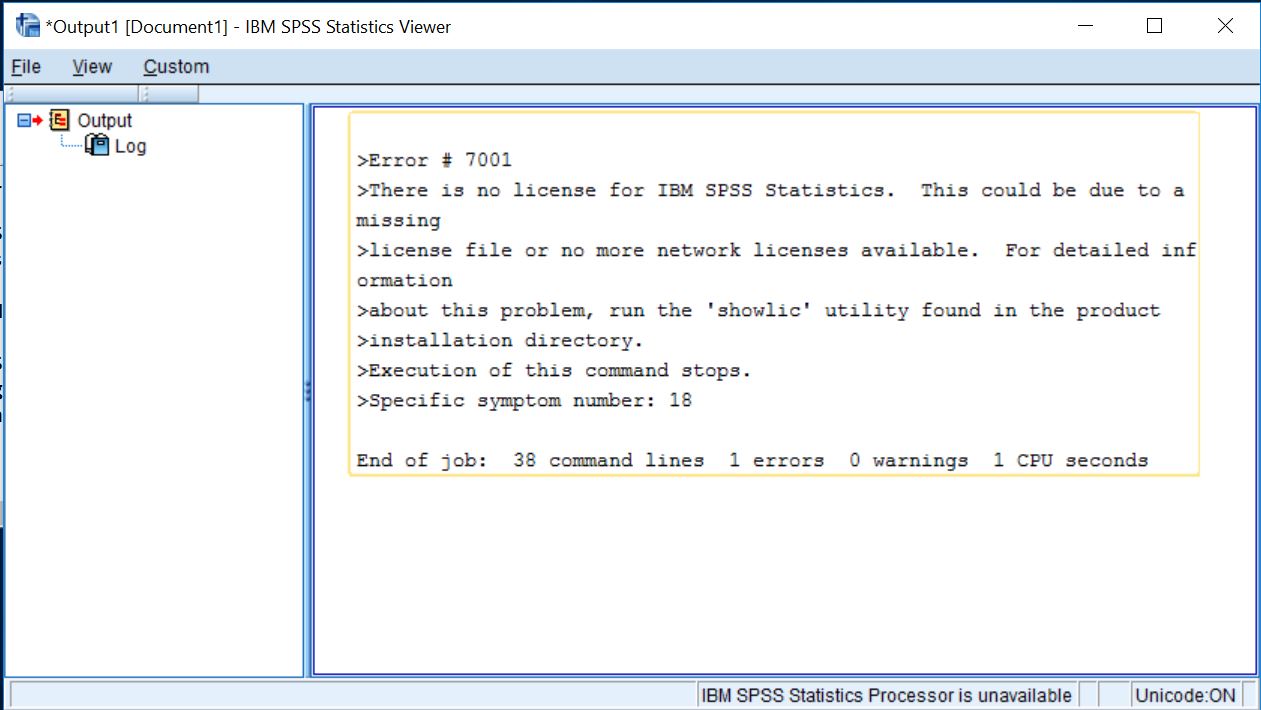

- COPYING LINES IN SPSS CODE HOW TO
- COPYING LINES IN SPSS CODE FULL
- COPYING LINES IN SPSS CODE SOFTWARE
- COPYING LINES IN SPSS CODE PLUS
- COPYING LINES IN SPSS CODE WINDOWS
It is therefore very useful to have the list of variable names and their associated labels. for a survey containing multiple “select all that apply” type questions/responses). While the name is often clear for variables such as sex, you may find that the names are less clear for other options (e.g. “Sex of respondent”), these aren’t shown in the R dataframe, only the variable names are shown (e.g. Unfortunately, if your SPSS datafile had variable labels (e.g. Use whatever name is best for you, and remember to change all instances of dataset to your actual dataset name in later code. Note: I am using dataset as my dataset name in this example. The option at the end creates the R file as a dataframe, which is the type of data object I want in R. There is a nifty trick to getting the filepath for the SPSS datafile you wish to import, use:Ĭopy and paste the filepath into this code:ĭataset = read.spss(“”, to.ame=TRUE) This package is installed by default as part of the R core installation.

sav extension, and we can import these into R using the foreign package. csv file, R can import some datasets from their native filetype.
COPYING LINES IN SPSS CODE SOFTWARE
While there are some export functions in other statistical software that will export to a different filetype, or we may simply use a. In fact, I'd love to se some head to head "speed and ease" competitions.When using R, we may need find our data has been saved in a different statistics package. But I am certain for 99% of the tasks I do (including high end modeling) I can do in SPSS (using both point/click and code) in half to 75% of the time what it takes to do same in SAS. SAS now frustrates me to no end - though I used to be its biggest fan.
COPYING LINES IN SPSS CODE PLUS
now (having to use SAS) it takes me 10 minutes plus I have to do all the ancillary stuff of Data step, save project (not data?) in EG, etc. I could quickly throw data into SPSS use Aggregate to do all dorts of distilling and be back in Excel for reporting in like 30 seconds. SPSS has some amazingly elegantly simple functionalities that leave SAS in the dust.

I used in extensively daily, though occasionally (< 5% of time) used special macros only available in SAS. And then I began a long career in Marketing Research, where everyone uses SPSS.so I migrated over to SPSS. After major programming achievments using SAS back in the 80's, including a complex dissertation using SAS/IML, I counted myself back as a SAS guru/expert. but I actually have a bit different story and take (spoiler alert: I've come to basically hate all SAS, EG and otherwise, no matter how hard I try to like it again!). I hear ya Marty - as I also cut my programming teeth in the 70's using SAS!.
COPYING LINES IN SPSS CODE FULL
Or, you could simply paste into a text file as-is, and then save that file to read into a SAS program at a later time, bringing it full circle. You can paste the content into a Google Doc spreadsheet too. Microsoft Excel isn't the only app that can handle tab-delimited data in this way. That's just what spreadsheet programs do.
COPYING LINES IN SPSS CODE HOW TO
When you paste the same content into Microsoft Excel, the Excel application knows how to automatically distribute these values into distinct columns. If you paste this into a text editor that shows a view of "special characters", you can see the tabs along with the end-of-line delimiters. The first line of the data will be the SAS variable names from your selected data.
COPYING LINES IN SPSS CODE WINDOWS
This action places the data values in tab-delimited form onto the Windows clipboard. With the selection active, right-click and select Copy with headers. The data cells must be contiguous, but you don't need to select all columns or all cells within the data set. To get started, simply select the data that you want within the SAS Enterprise Guide data grid. That tip captures the column properties, but not the actual data values. Note: this is different than the "copy data attributes" tip that I published a while back. This is very convenient for copying into a new Microsoft Excel spreadsheet or other table structure (like a Google Docs spreadsheet). The new "Copy with headers" feature creates a tab-delimited version of your selected data cells, complete with a heading row that includes the column names. SAS Enterprise Guide 7.1 added a nifty little feature that makes copy-and-paste even more useful. While I've often written ab out how to get your SAS data to Microsoft Excel in some automated way, I haven't really addressed what's probably the most frequently used method: copy and paste.


 0 kommentar(er)
0 kommentar(er)
